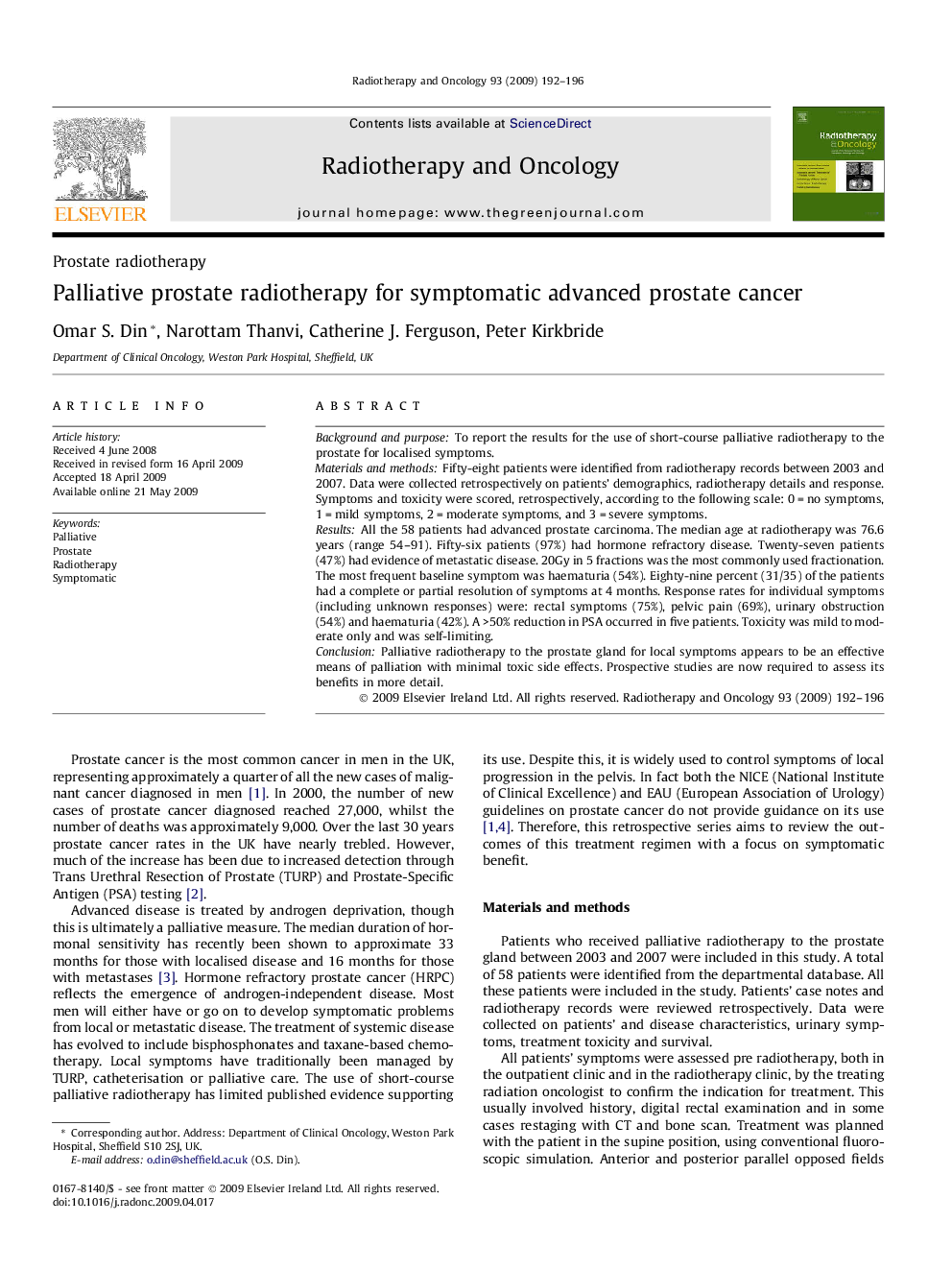| Article ID | Journal | Published Year | Pages | File Type |
|---|---|---|---|---|
| 2159780 | Radiotherapy and Oncology | 2009 | 5 Pages |
Background and purposeTo report the results for the use of short-course palliative radiotherapy to the prostate for localised symptoms.Materials and methodsFifty-eight patients were identified from radiotherapy records between 2003 and 2007. Data were collected retrospectively on patients’ demographics, radiotherapy details and response. Symptoms and toxicity were scored, retrospectively, according to the following scale: 0 = no symptoms, 1 = mild symptoms, 2 = moderate symptoms, and 3 = severe symptoms.ResultsAll the 58 patients had advanced prostate carcinoma. The median age at radiotherapy was 76.6 years (range 54–91). Fifty-six patients (97%) had hormone refractory disease. Twenty-seven patients (47%) had evidence of metastatic disease. 20Gy in 5 fractions was the most commonly used fractionation. The most frequent baseline symptom was haematuria (54%). Eighty-nine percent (31/35) of the patients had a complete or partial resolution of symptoms at 4 months. Response rates for individual symptoms (including unknown responses) were: rectal symptoms (75%), pelvic pain (69%), urinary obstruction (54%) and haematuria (42%). A >50% reduction in PSA occurred in five patients. Toxicity was mild to moderate only and was self-limiting.ConclusionPalliative radiotherapy to the prostate gland for local symptoms appears to be an effective means of palliation with minimal toxic side effects. Prospective studies are now required to assess its benefits in more detail.
